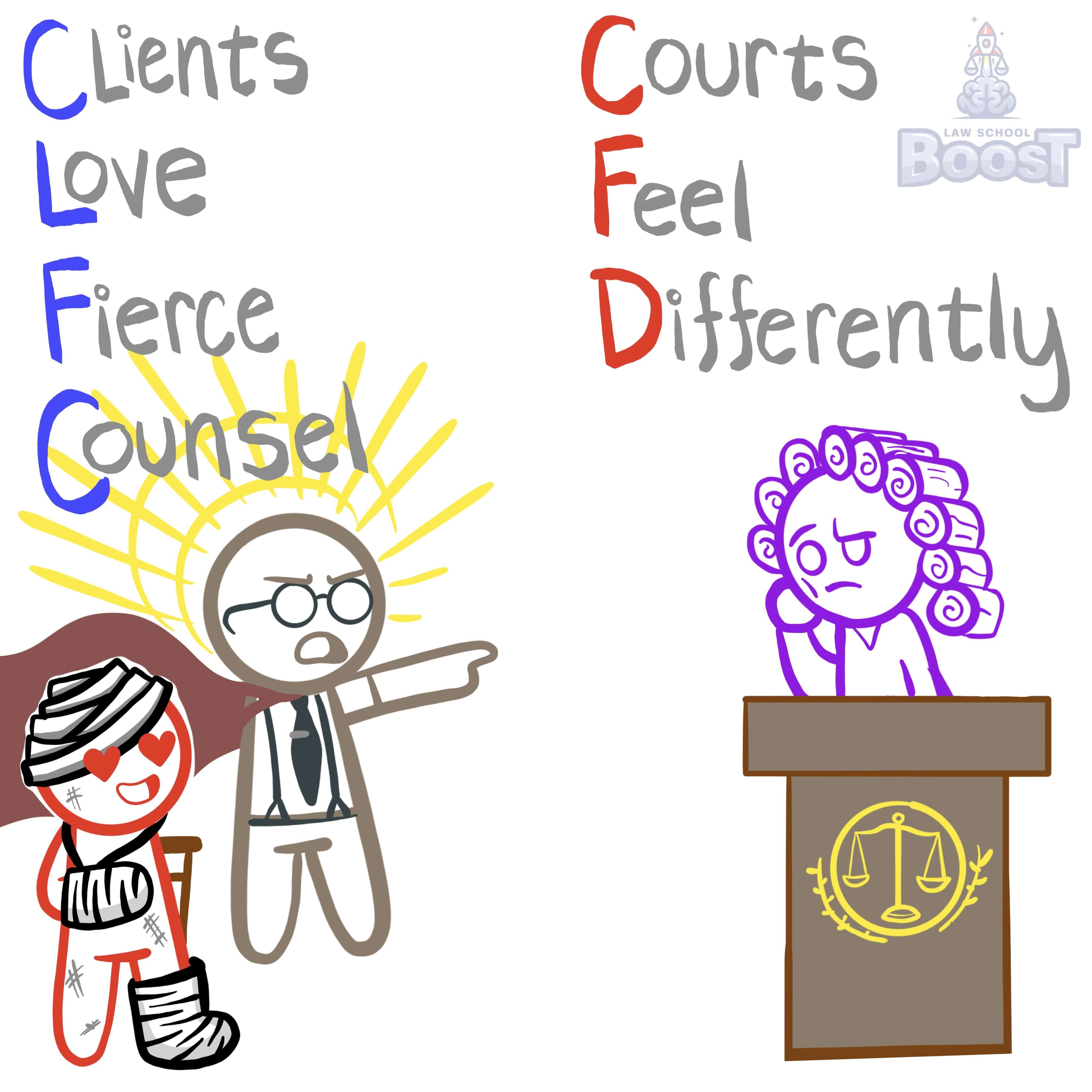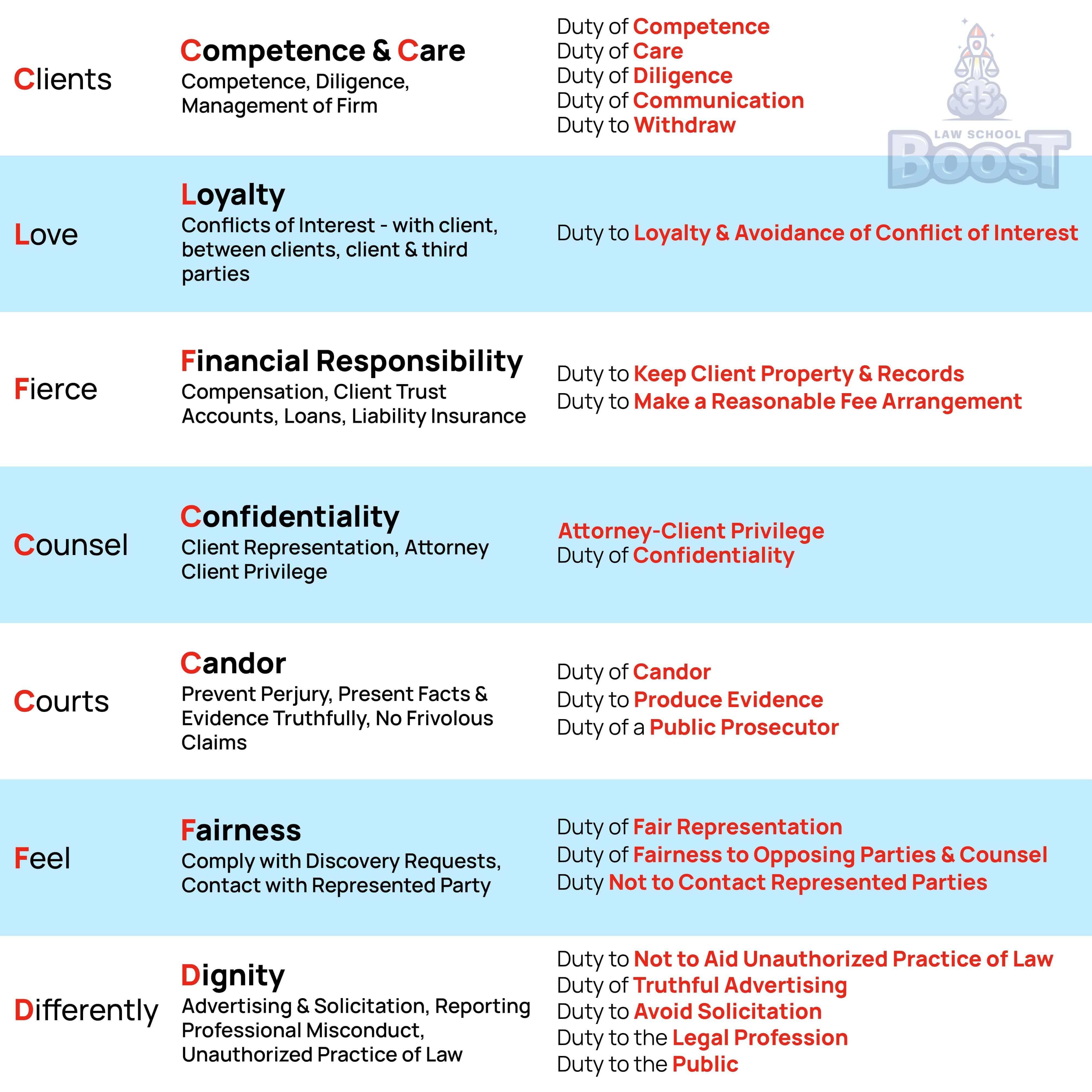‼️
Prof Responsibility • Formation & Scope
PR#002
Legal Definition
An attorney-client relationship forms when (1) a person requests legal services, and (2) the lawyer either (a) agrees to provide those services, or (b) does not decline representation and should realize that the person is reasonably relying on them to act as their lawyer.
Plain English Explanation
Lawyers owe significant duties to their clients, but not everyone is a client. So then how does someone go from being a random nobody to becoming a sacred client? Honestly, it's incredibly easy — which can cause problems.
It starts off with a person seeking out or requesting legal services. This happens all the time. Seriously. From the moment you pass the bar, everyone and their mother will be asking you for legal advice on various topics ranging from parking tickets to crimes you wish you hadn't heard of. How a lawyer reacts to these questions will ultimately define whether or not an attorney-client relationship forms.
The first way that the relationship can form is if the attorney consents to being their attorney, or providing legal advice. This one is pretty obvious.
The second way is more tricky. Why? Because the existence of the attorney-client relationship is ultimately decided on the belief of the person seeking legal advice. In other words, if someone believes that you are their attorney, and it is arguably reasonable for them to have this belief, then the law will deem the lawyer to actually be their attorney, forming the attorney-client privielge and triggering all the duties you will learn about in this deck. This is true even if the attorney didn't actually want to be the person's attorney.
In fact, it is so easy to create an attorney-client relationship that one of the most common things you will hear an attorney say is, "I am an attorney, but I am not your attorney," before answering questions that have anything to do with the law. This creates a clear, explcite denial of engagement that can fend off later claims from the person that they believed they were the lawyer's client.
It starts off with a person seeking out or requesting legal services. This happens all the time. Seriously. From the moment you pass the bar, everyone and their mother will be asking you for legal advice on various topics ranging from parking tickets to crimes you wish you hadn't heard of. How a lawyer reacts to these questions will ultimately define whether or not an attorney-client relationship forms.
The first way that the relationship can form is if the attorney consents to being their attorney, or providing legal advice. This one is pretty obvious.
The second way is more tricky. Why? Because the existence of the attorney-client relationship is ultimately decided on the belief of the person seeking legal advice. In other words, if someone believes that you are their attorney, and it is arguably reasonable for them to have this belief, then the law will deem the lawyer to actually be their attorney, forming the attorney-client privielge and triggering all the duties you will learn about in this deck. This is true even if the attorney didn't actually want to be the person's attorney.
In fact, it is so easy to create an attorney-client relationship that one of the most common things you will hear an attorney say is, "I am an attorney, but I am not your attorney," before answering questions that have anything to do with the law. This creates a clear, explcite denial of engagement that can fend off later claims from the person that they believed they were the lawyer's client.
Hypothetical
Hypo 1: Sam approaches Bob, an attorney, at a neighborhood barbecue and asks for advice about a contract dispute with his employer. Bob listens to Sam's situation and offers some general thoughts on contract law. Sam thanks Bob and says he feels much better about how to handle the situation now. Result: An attorney-client relationship has likely formed here, even though Bob may not have intended it. Sam sought legal services by asking for advice, and Bob provided legal information without clearly declining representation. Sam could reasonably believe Bob was acting as his lawyer in this situation. Moreover, after thanking Bob, Sam explicitly said that the information Bob provided was going to help him "handle the situation," which means Sam believed it to be actioable legal guidance. If Bob didn't want to create the relationship, he should have added, "Woah, settle down now, I was just providing general advice, not legal advice. Though I am an attorney, I am not your attorney and you should consider hiring one who can better advise you on what to do."
Hypo 2: Bob is at a coffee shop when he overhears Sam discussing a potential lawsuit against his business partner. Bob introduces himself as an attorney and offers Sam his business card, saying he'd be happy to discuss the case if Sam wants to set up a consultation. Sam takes the card but never contacts Bob. Result: No attorney-client relationship has formed in this scenario. While Bob offered his services, Sam did not actually request legal services from Bob, so the first element of forming the relationship is not met.
Hypo 3: Sam emails Bob asking if he can represent Sam in an upcoming divorce case. Bob replies that he doesn't handle family law matters, but he'd be happy to refer Sam to a colleague who specializes in divorce. Sam says thanks but he'll keep looking on his own. Result: No attorney-client relationship has formed. Although Sam requested legal services, Bob clearly declined representation. Sam could not reasonably believe Bob was acting as his lawyer after this exchange.
Hypo 4: Sam approaches Bob at a party and says he's thinking of suing his neighbor over a property line dispute. Bob, who has had a few drinks, excitedly starts outlining legal strategies and telling Sam he'll "definitely win" the case. Sam takes notes and thanks Bob for the help. Result: An attorney-client relationship has likely formed. Sam sought legal services and Bob provided advice without declining representation. Even though Bob was socializing and may not have intended to form a professional relationship, Sam could reasonably rely on Bob's statements as legal advice from an attorney.
Hypo 5: Bob works for a legal aid clinic that offers free 15-minute consultations. Sam signs up for a slot to discuss a potential personal injury claim. During the brief meeting, Sam describes his situation and Bob provides some general information about personal injury law. At the end, Bob clearly states this was just an initial consultation and Sam would need to formally hire him for any further legal work. Result: No ongoing attorney-client relationship has formed beyond the limited scope of the consultation. While Sam did seek and receive some legal services, Bob made it clear that his representation was limited to just the brief meeting. Sam could not reasonably believe Bob was now his attorney for the injury case without further action.
Hypo 2: Bob is at a coffee shop when he overhears Sam discussing a potential lawsuit against his business partner. Bob introduces himself as an attorney and offers Sam his business card, saying he'd be happy to discuss the case if Sam wants to set up a consultation. Sam takes the card but never contacts Bob. Result: No attorney-client relationship has formed in this scenario. While Bob offered his services, Sam did not actually request legal services from Bob, so the first element of forming the relationship is not met.
Hypo 3: Sam emails Bob asking if he can represent Sam in an upcoming divorce case. Bob replies that he doesn't handle family law matters, but he'd be happy to refer Sam to a colleague who specializes in divorce. Sam says thanks but he'll keep looking on his own. Result: No attorney-client relationship has formed. Although Sam requested legal services, Bob clearly declined representation. Sam could not reasonably believe Bob was acting as his lawyer after this exchange.
Hypo 4: Sam approaches Bob at a party and says he's thinking of suing his neighbor over a property line dispute. Bob, who has had a few drinks, excitedly starts outlining legal strategies and telling Sam he'll "definitely win" the case. Sam takes notes and thanks Bob for the help. Result: An attorney-client relationship has likely formed. Sam sought legal services and Bob provided advice without declining representation. Even though Bob was socializing and may not have intended to form a professional relationship, Sam could reasonably rely on Bob's statements as legal advice from an attorney.
Hypo 5: Bob works for a legal aid clinic that offers free 15-minute consultations. Sam signs up for a slot to discuss a potential personal injury claim. During the brief meeting, Sam describes his situation and Bob provides some general information about personal injury law. At the end, Bob clearly states this was just an initial consultation and Sam would need to formally hire him for any further legal work. Result: No ongoing attorney-client relationship has formed beyond the limited scope of the consultation. While Sam did seek and receive some legal services, Bob made it clear that his representation was limited to just the brief meeting. Sam could not reasonably believe Bob was now his attorney for the injury case without further action.
Visual Aids





